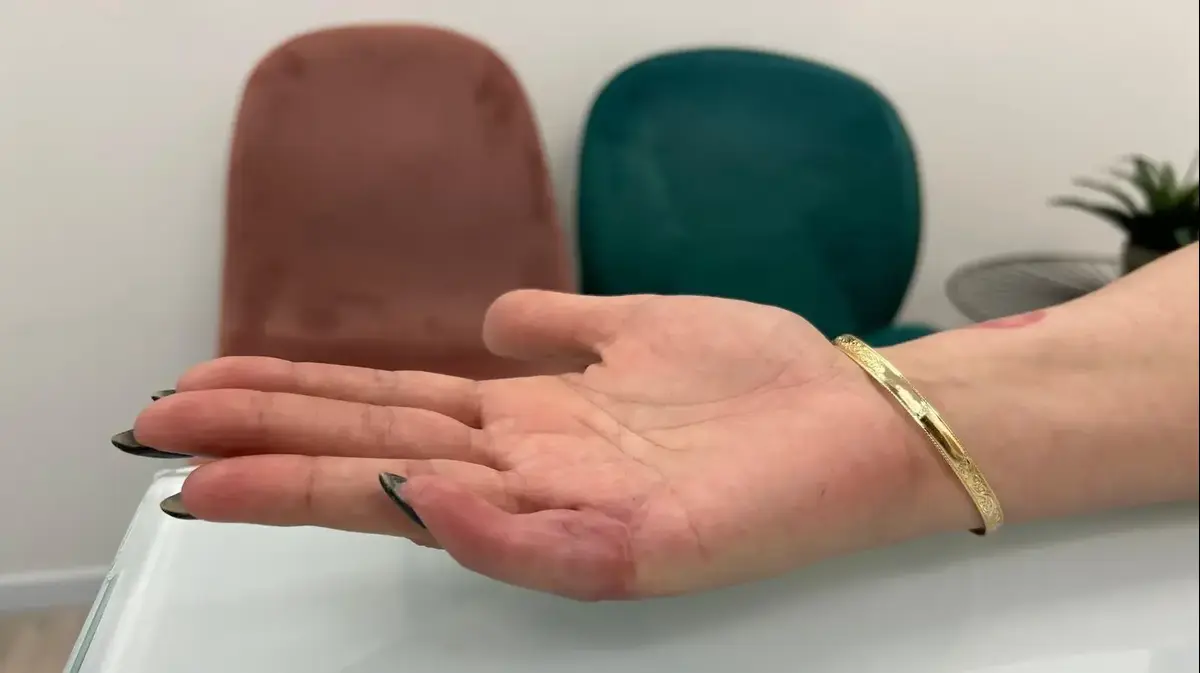A boy survived for about eight years after surgery that amputated his left foot some 31,000 years ago, according to remains found in the remote Liang Tebo cave on the Indonesian island of Borneo.
The bones of the severed leg indicate that it was an intentional cut, surgical in his own way, with something blunt and with enough knowledge to prevent the patient from bleeding to death or broken in pain.
The operation was successful and the postoperative care was carried out with the necessary mastery to keep the kid alive for another eight years.
The oldest surgical intervention known so far was carried out in France about 7,000 years ago, according to the team of archaeologist Tim Maloney, from Griffith University in Australia,
Nature
.
Liang Tebo cave in Kalimantan province (Borneo)Tim Maloney
For the paleoanthropologist María Martinón Torres, director of the National Center for Research on Human Evolution (Cenieh), it is probably "the oldest evidence of the figure of the doctor", someone with specialized knowledge compared to the rest.
The scientist, who has not participated in this study, believes that it is another proof that
Homo sapiens,
from its origins, has "provided help and care to those who, comparatively, have some disability" within the group.
The site where scientists found the burial is inside a mountainous area of tropical forest known as Sangkulirang–Mangkalihat, which is only accessible by boat at certain times of the year.
It is a limestone rock formation that, when decomposed by water erosion, gives rise to caverns "the size of a cathedral", in the words of scientists.
The first thing the researchers found were cave paintings, in an area of Southeast Asia that has already been recognized as hosting the first figurative drawings of humanity, made more than 40,000 years ago.
More information
The oldest human in Europe: prehistory that makes history
The team of archaeologists excavated in the lower part of the cave to a depth of 1.5 meters, where they found the fossil remains of the complete right leg, plus the amputated left tibia and fibula.
In the severed limb you can see "in the collagen that surrounds the bones what are characteristic signs that indicate that it is already healed," says paleoanthropologist Laura Martín-Francés, another researcher affiliated with Cenieh who has not been involved in the discovery either.
Researcher Tim Maloney (right) excavates with a colleague at Liang Tebo caveTim Maloney
Martín-Francés describes the finding as important because "the act of amputating requires the ability to foresee that, if not done, the subject dies."
The same authors of the investigation rule out that the cut was the result of chance, a violent accident or a bite from another animal.
The
doctor
who performed the surgery must have had "prior knowledge" of the human body and perhaps even carried out previous tests with other animals to learn about the anatomy, according to Martín-Francés.
In a companion article published in
Nature
, Professor Charlotte Ann Robert, of the University of Durham (United Kingdom), underlines the complexity of an amputation: preventing the patient from bleeding to death may have required knowledge of medicinal plants in the area, possibly a “type of moss”.
For the two Spanish researchers, the most outstanding fact of the discovery is the "empathy" that reflects the act itself, not only the intervention, but also the subsequent care in an "extreme" situation such as life during the late Pleistocene, in full ice Age.
"The fact that
Homo sapiens
have developed the ability to selflessly care for others does not make us unique, but almost," says Martín-Francés.
And delves into that point Martinón Torres, author of the book
Homo Imperfectus
(Destiny, 2022): "In our species, the survival instinct encompasses the group, not just the individual, and includes premeditated, proactive and organized acts, such as the institutionalization of care."
In addition, the expert points out, the fact that it was "cared for for years and buried also shows that until the end it was integrated into the life of that society."
You can follow MATERIA on
,
and
, or sign up here to receive
our weekly newsletter
.

/cloudfront-eu-central-1.images.arcpublishing.com/prisa/KGH2HNBE3NEY3FB22ESAQSQFTE.jpg)









/cloudfront-eu-central-1.images.arcpublishing.com/prisa/KMEYMJKESBAZBE4MRBAM4TGHIQ.jpg)



